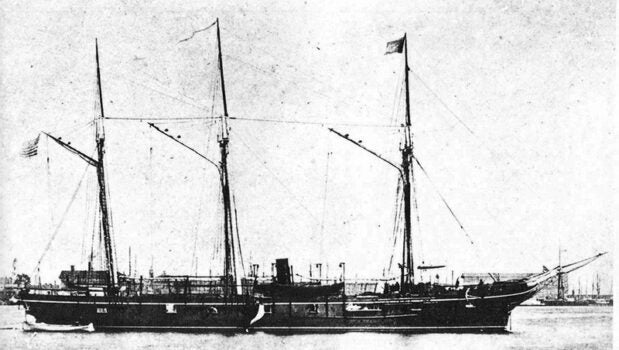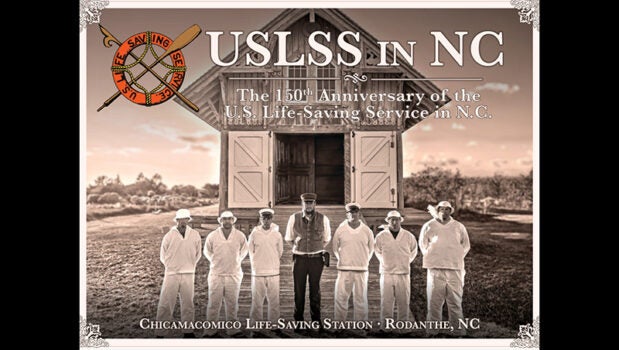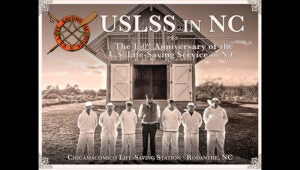USLSS in NC: Unwavering Courage
Published 2:05 pm Thursday, February 22, 2024
|
Getting your Trinity Audio player ready...
|
By Jen Carlson
In the wee hours of November 24, 1877, the steamer Huron stranded itself about two and a half miles from the Nags Head station. Rough seas caused the vessel to keel over so her crew valiantly tried to survive the storm by clinging to her remains. Unfortunately, the Nags Head station wasn’t open for the season, so no assistance was coming from shore. Ensign Lucien Young and Seaman Antoine Williams undertook the hazardous challenge of attempting to get a line from the vessel to shore in the hopes of helping their comrades make it to safety.
The two men worked together to untie the balsa, a small rubber raft, which had become entangled under the starboard bow. After freeing the balsa, the two men attempted to row to shore, but the rough waves promptly flipped them out into the water. Unshaken, the men gained a handhold on the raft and began swimming it to land. Four times, the water capsized the small raft and attempted to drown the determined men and four times, they recovered and kept swimming towards safety. Finally, they reached the surf, exhausted from their arduous swim. Turning, they saw two fellow comrades struggling in the breakers so Young and Williams headed back into the water to pull the two men ashore. After reaching shore a second time, they realized the balsa was being tossed into the surf so yet again, they went back into the water to retrieve the small boat in hopes of using it as a life-car. Unfortunately, the line was too short to reach the stricken vessel so now they had to find a line long enough to reach. Spotting two more seamen in the breakers, Young and Williams entered the rough water a third time with locked hands in order to drag the men to safety. Seeing no one else in the breakers, Seamen Williams tended to the exhausted men while Ensign Young headed to the nearest station trying to find a long enough line. Finding the Nags Head station closed, Young broke in through the front door to retrieve equipment he could use to help his fellow seamen.
Tragically, only 34 of the 132 seamen survived the wreck that night making it one of the largest losses of life in the history of the United States LifeSaving Service. Shortly after this incident, the LifeSaving Stations seasons were extended and soon after Keepers would man the stations year-round. It is believed that had the Nags Head station been open, beach patrols would have spotted the stricken vessel and many more, if not all lives, could have been saved. Further tragedy happened the following day when the Superintendent of the Sixth District, Captain J.J. Guthrie, along with four other men, were drowned when their boat capsized in the rough waters as they were trying to come ashore after being lowered from the wrecking steamer, the B. & J. Baker. Captain Guthrie was trying to reach the survivors of the Huron to ensure they were getting all the care they needed.
As for Ensign Young and Seaman Williams, they were both recipients of a gold medal of the first class in recognition of their unwavering efforts that stormy night.
All in a Day’s Work
Sometimes it’s just about being a good neighbor: On November 16, 1884, the small schooner, Adamant, broke loose from her anchor and was driven ashore in a heavy blow just south of the Little Kinnakeet station. Her crew of three lived locally and were on onshore at the time of the incident. For almost a week, she remained on land before the captain of the vessel requested help from the LifeSaving station crew to get her back into the water. They dug her out of the sand and used rollers to move the vessel about 40 yards to where she was once again floating.
We hope you will join us October 11-13, 2024 in celebration as we recognize the #LegacyofLifeSaving and the lasting impact of these often-unsung heroes. Go to chicamacomico.org for details of the events.
READ MORE IN THIS SERIES HERE:
SUBSCRIBE TO THE COASTLAND TIMES TODAY!









